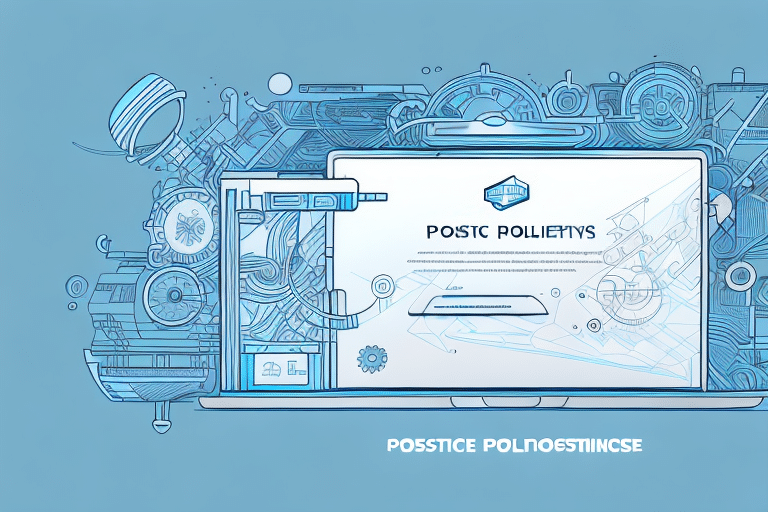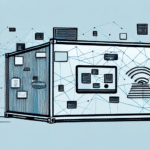Revolutionizing Post Delivery with Smart Technology
The post delivery industry is undergoing a transformative shift thanks to the integration of smart technology. Traditional delivery systems, while reliable over the years, face challenges that impact customer satisfaction, security, and operational efficiency. Smart technologies such as Artificial Intelligence (AI), the Internet of Things (IoT), and machine learning are introducing innovative solutions that address these issues, paving the way for a more efficient and secure delivery landscape. This article delves into the necessity of smart technology in post delivery, its benefits, current challenges, real-world applications, and future prospects.
Understanding the Need for Smart Technology in Post Delivery
The exponential growth of e-commerce has significantly increased the demand for efficient and reliable post delivery services. Traditional delivery systems, which often rely on manual processes, struggle to manage the high volume of packages, leading to challenges like package loss, theft, delayed deliveries, and inadequate tracking systems. Smart technology offers solutions by leveraging advanced tools such as AI and IoT to enhance the efficiency and reliability of delivery services.
Enhancing Real-Time Tracking and Transparency
One of the standout benefits of smart technology is the ability to provide real-time tracking and monitoring of packages. Customers can receive updates at every stage of the delivery process, from dispatch to arrival, ensuring transparency and reducing anxiety related to package whereabouts.
Optimizing Delivery Routes and Schedules
Smart technology utilizes data analytics and machine learning algorithms to optimize delivery routes and schedules. By analyzing factors like traffic patterns, weather conditions, and package volume, delivery companies can identify the most efficient paths, thereby reducing delivery times and operational costs.
Challenges in Traditional Post Delivery Systems
Traditional post delivery systems are often hindered by several issues that impede their effectiveness:
- Package Loss and Theft: Manual handling increases the risk of misplaced or stolen packages.
- Delayed Deliveries: Inefficient processes and lack of real-time tracking contribute to delays.
- Security and Privacy Concerns: Limited security measures can lead to breaches and privacy violations.
- Inadequate Customer Service: Poor tracking systems and lack of transparency frustrate customers.
Key Smart Technologies Transforming Post Delivery
Artificial Intelligence and Machine Learning
AI and machine learning are pivotal in predicting delivery times, optimizing routes, and managing logistics. These technologies analyze vast amounts of data to make informed decisions that enhance efficiency and service quality.
Internet of Things (IoT)
IoT devices, such as sensors and RFID tags, enable real-time tracking and monitoring of packages. These devices provide continuous data that helps in maintaining the security and integrity of the delivery process.
Drones and Autonomous Vehicles
Drones and autonomous vehicles are revolutionizing the delivery landscape by offering faster and more cost-effective delivery options, especially in remote or hard-to-reach areas. Companies like Amazon and Zipline are pioneering the use of these technologies to enhance delivery capabilities.
Smart Lockers and Secure Pickups
Smart lockers provide secure locations for customers to pick up their packages at their convenience, reducing the risk of missed deliveries and increasing overall customer satisfaction.
Benefits of Implementing Smart Technology in Post Delivery
Improved Customer Satisfaction
Enhanced transparency through real-time tracking and reliable delivery schedules significantly boost customer trust and satisfaction.
Increased Operational Efficiency
Optimized routes and automated processes reduce delivery times and operational costs, leading to more efficient service delivery.
Environmental Sustainability
Smart technologies contribute to reducing the carbon footprint by optimizing delivery routes and utilizing eco-friendly delivery vehicles, promoting a greener environment.
Real-World Applications and Case Studies
Several companies have successfully integrated smart technology into their delivery systems:
- Amazon: Utilizes AI for route optimization and has developed drones for faster deliveries.
- Walmart: Implements smart lockers across its stores to facilitate secure and convenient package pickups.
- Zipline: Uses drones to deliver medical supplies to remote areas, enhancing healthcare delivery.
Potential Drawbacks and Limitations
While smart technology offers numerous advantages, there are challenges to its widespread adoption:
- High Implementation Costs: The initial investment for smart technologies can be significant, posing a barrier for smaller companies.
- Regulatory Hurdles: The use of drones and autonomous vehicles is subject to strict regulations, which can limit their deployment.
- Cybersecurity Risks: Increased reliance on digital systems heightens the risk of cyberattacks and data breaches.
Future Implications and Trends
The integration of smart technology in post delivery is set to deepen, with advancements in AI, IoT, and robotics driving further innovations. Future trends include the increased use of collaborative robots in warehouses, enhanced predictive analytics for better demand forecasting, and the broader adoption of sustainable delivery methods.
Conclusion: Shaping the Future of Post Delivery
Smart technology holds immense potential to transform the post delivery industry by enhancing efficiency, security, and customer satisfaction. Despite certain challenges, the benefits far outweigh the drawbacks, making the adoption of smart technologies a strategic imperative for delivery companies aiming to stay competitive in a rapidly evolving market. As technology continues to advance, the future of post delivery promises more efficient, reliable, and sustainable solutions that cater to the growing demands of consumers.






















